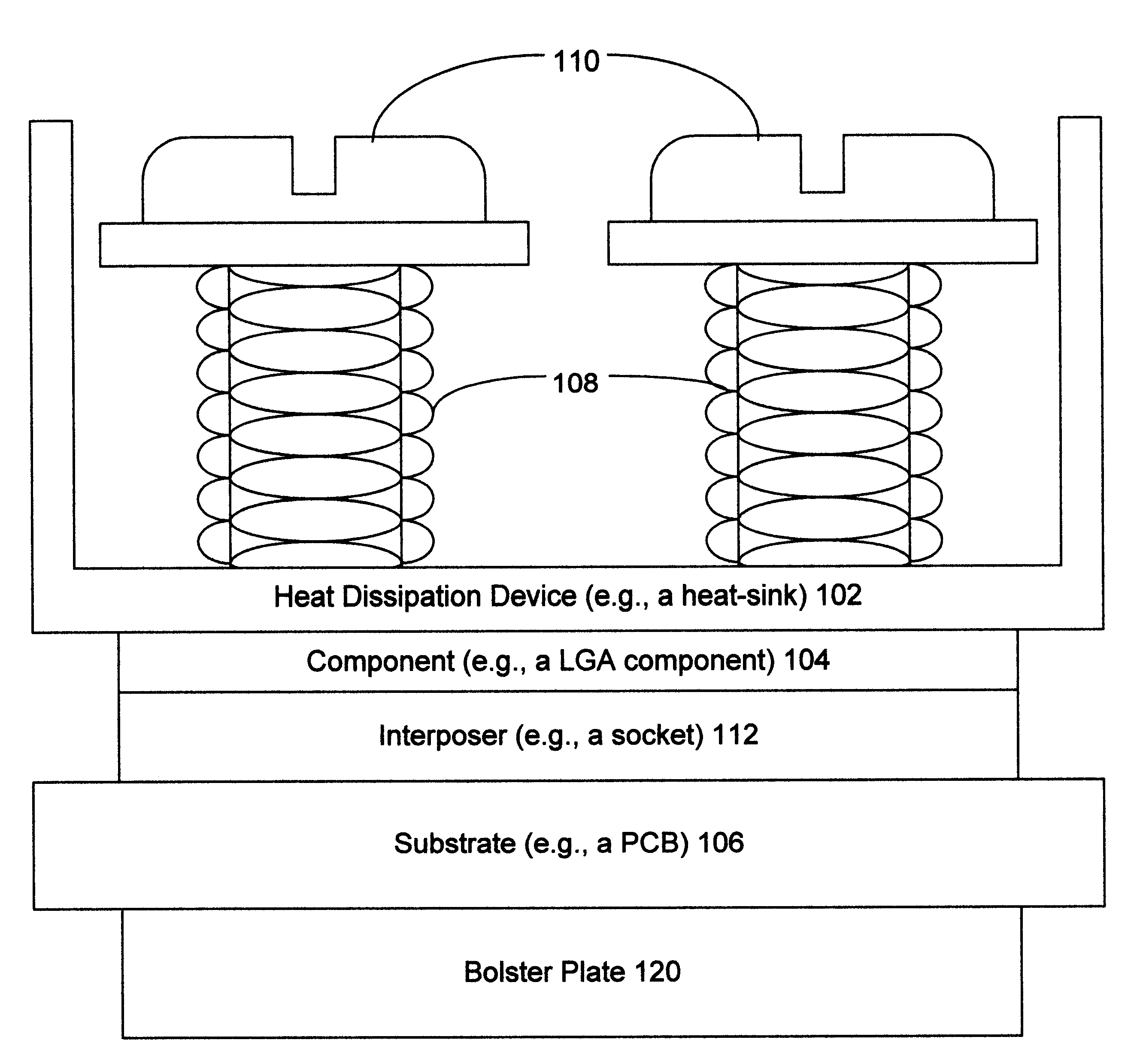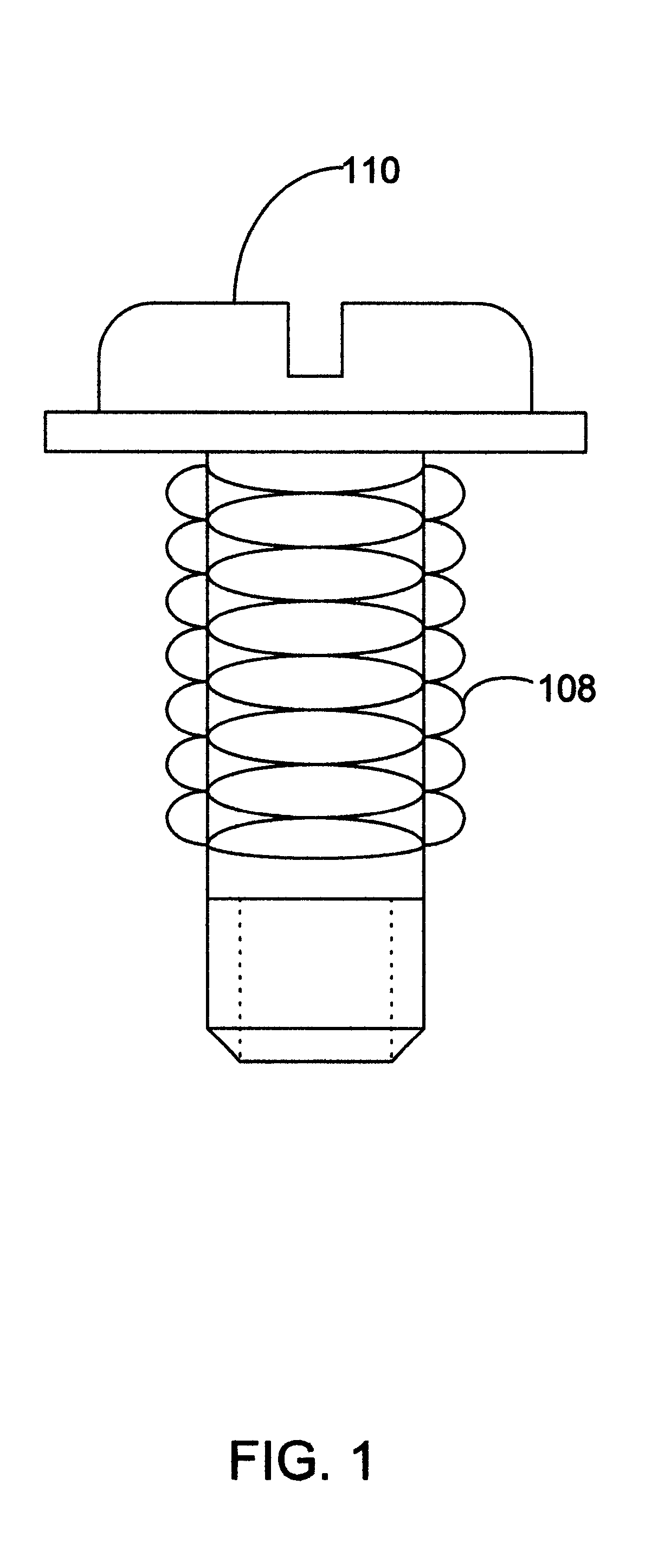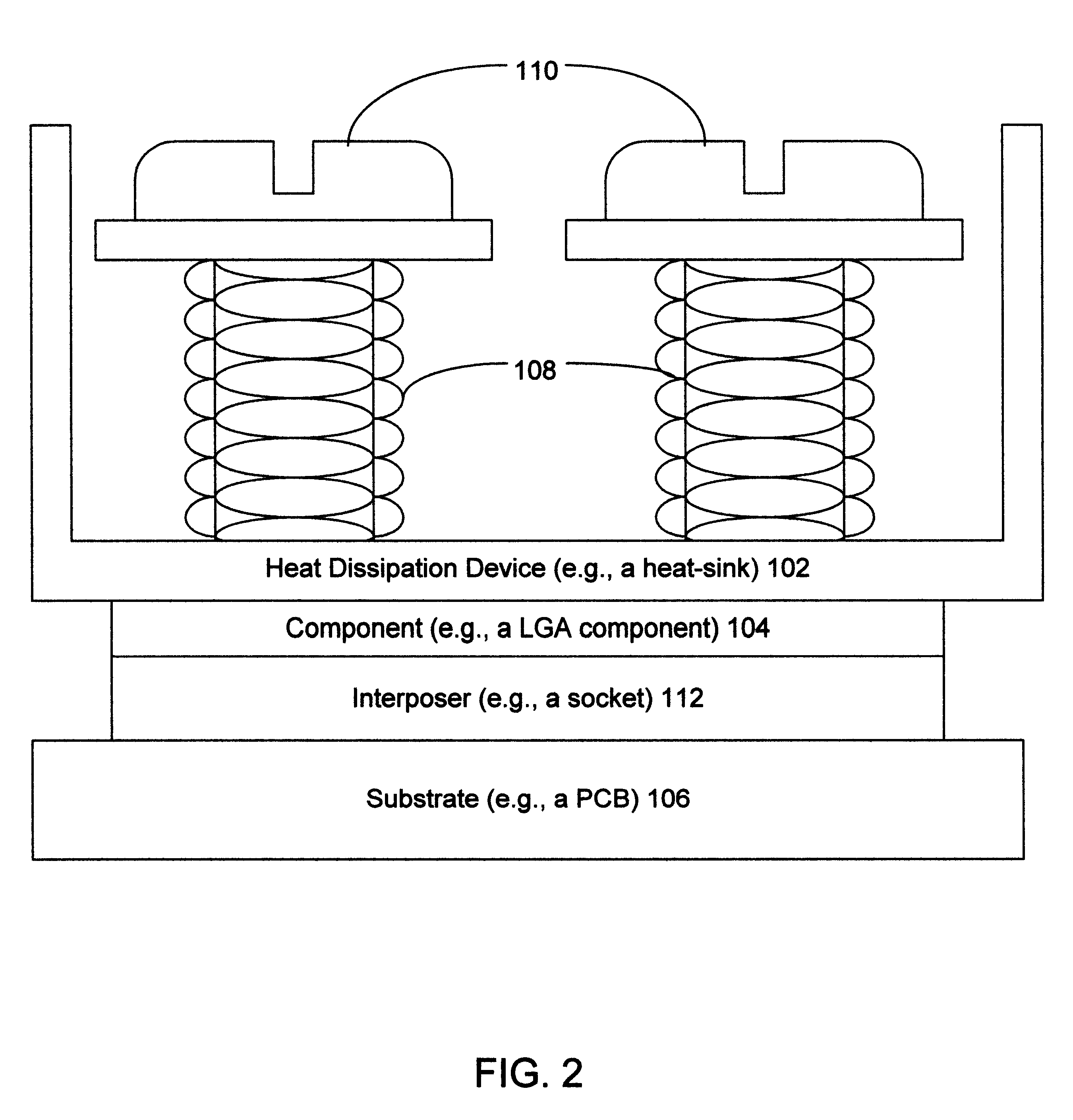Mechanical loading of a land grid array component using a wave spring
- Summary
- Abstract
- Description
- Claims
- Application Information
AI Technical Summary
Problems solved by technology
Method used
Image
Examples
Embodiment Construction
The present invention uses a wave spring to clamp a component to a substrate, such as a printed circuit board (PCB) or a multi-chip module. While the discussion below is directed to an application of the invention to a LGA component and a heat-sink assembled on a substrate (e.g., a PCB), the invention can also be applied to other types of electrical components (e.g., transformers, power supplies, connectors) held to a substrate by using another structure, for example a block, a clamp, or a heat dissipation device (e.g., a heat-sink, a heat-pipe, a fluid cooling device, a cooling fan, or an equivalent). Components can be also assembled on other substrates (e.g., multi-chip modules, and flexible substrates upon which electrical components can be assembled).
FIG. 1 illustrates a side view of a wave spring 108 on a bolt 110, according to one embodiment of the present invention. The wave spring 108 (e.g., a Spirawave.RTM. spring such as a Crest-to-Crest.RTM. spring available from Smalley....
PUM
| Property | Measurement | Unit |
|---|---|---|
| Flexibility | aaaaa | aaaaa |
| Area | aaaaa | aaaaa |
Abstract
Description
Claims
Application Information
 Login to View More
Login to View More - R&D
- Intellectual Property
- Life Sciences
- Materials
- Tech Scout
- Unparalleled Data Quality
- Higher Quality Content
- 60% Fewer Hallucinations
Browse by: Latest US Patents, China's latest patents, Technical Efficacy Thesaurus, Application Domain, Technology Topic, Popular Technical Reports.
© 2025 PatSnap. All rights reserved.Legal|Privacy policy|Modern Slavery Act Transparency Statement|Sitemap|About US| Contact US: help@patsnap.com



